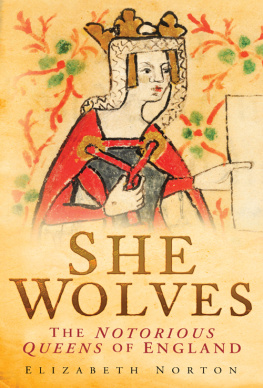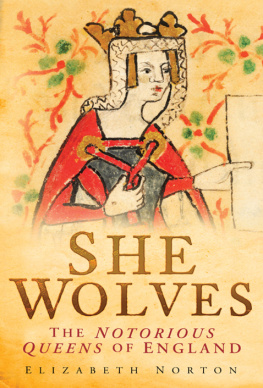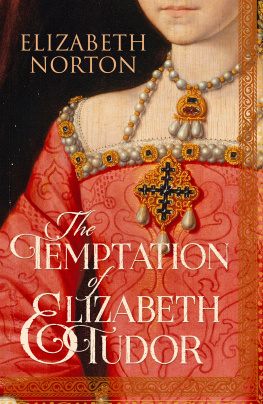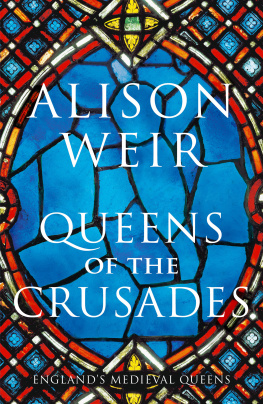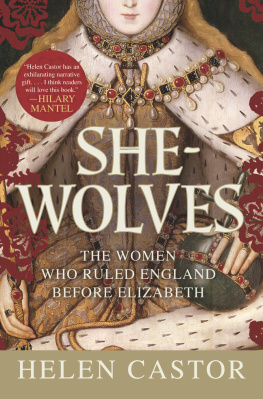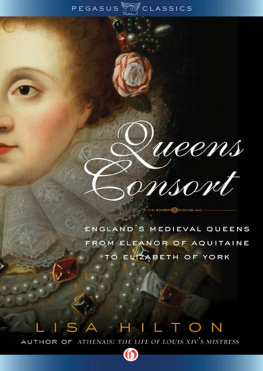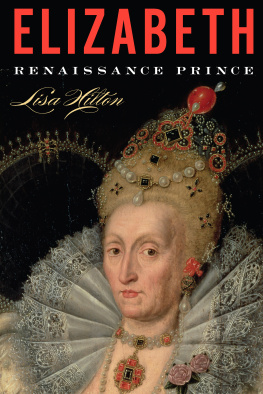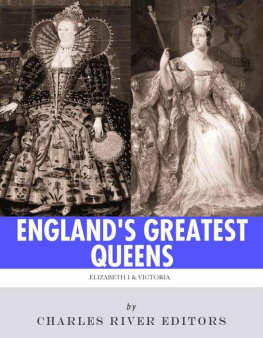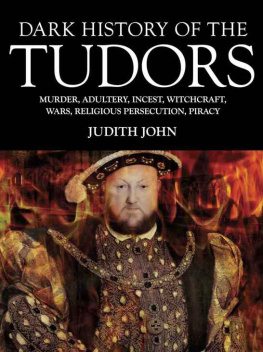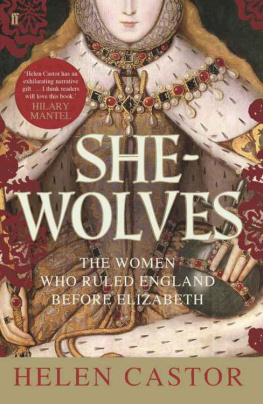S HE
W OLVES
S HE
W OLVES
T HE N OTORIOUS
Q UEENS OF E NGLAND
E LIZABETH N ORTON
For my husband, David.
First published in 2008
This edition published 2009
The History Press
The Mill, Brimscombe Port
Stroud, Gloucestershire, GL 5 2 QG
www.thehistorypress.co.uk
This ebook edition first published in 2011
All rights reserved
Elizabeth Norton, 2008, 2009, 2011
The right of Elizabeth Norton, to be identified as the Author of this work has been asserted in accordance with the Copyrights, Designs and Patents Act 1988.
This ebook is copyright material and must not be copied, reproduced, transferred, distributed, leased, licensed or publicly performed or used in any way except as specifically permitted in writing by the publishers, as allowed under the terms and conditions under which it was purchased or as strictly permitted by applicable copyright law.
Any unauthorised distribution or use of this text may be a direct infringement of the authors and publishers rights, and those responsible may be liable in law accordingly.
EPUB ISBN 978 0 7524 6921 8
MOBI ISBN 978 0 7524 6922 5
Original typesetting by The History Press
Contents
1
Accused Queens Innocent Women?
Medieval England saw many queens. Some are remembered as saintly, or at least very nearly saintly, some are barely remembered at all and others are remembered as being truly notorious. Every century from the eighth to the sixteenth boasted at least one notorious queen who would provide scandal for chroniclers works for centuries to come. Their reputation and the salacious details of their lives that survive make these women some of the most vivid and interesting personalities of the medieval period. However, their lives were not always recorded truthfully. Chroniclers and other writers had their own motivations for writing about the women which were distinct from simply recording events as they happened. Some accused queens were guilty of their crimes, others were innocent such matters were not important to those writing, who were more interested in the subject of female power than making a detailed analysis of the facts. Medieval women did not conventionally wield power and the very existence of queens was something of a contradiction when women sought to redefine the queenly role as more than just the traditional kings wife.
The question, therefore, is: were these queens really as bad as their reputations suggest? Undoubtedly, some queens, such as the unfaithful Catherine Howard, were entirely unsuitable for the role in which they found themselves and can clearly be shown to be bad queens. But can they also be said to be bad women? Isabella, the She-Wolf of France, for example, is probably one of the most notorious of all the women discussed in this book, but was she truly wicked? Isabella invaded England and was a leader in the coup which led to her husbands deposition and murder, allowing her to rule England with her lover. This was clearly a scandalous course of action to take. However, Isabella, as a woman, had been sorely tried. She was married as a child to the homosexual Edward II and endured humiliation throughout her early marriage. Later she suffered undisguised hostility from her husband and his favourites. For Isabella, this was too much to bear, directly impacting on her later behaviour. Certainly to her contemporaries she was notorious but to modern observers and to Isabella herself, her actions were understandable.
Isabella of Frances actions can be understood in a study of her as a woman and who can say that the saintly Matilda of Scotland, queen to Henry I, for example, would not have acted similarly if she had been married to Edward II? As a woman, Isabella of Frances actions can be understood, but as a queen she is remembered as notorious and has been systematically vilified for centuries.
Why then, are some queens classed as notorious and others not? By the late eighth century, queenship had been developing in England for centuries and people already had a strong idea of just what a good queen should be. The Anglo-Saxons believed that a good queen was a passive one, fertile and religious but of no political consequence during her husbands reign, with only the potentially powerful role of queen mother to look forward to. First and foremost, Anglo-Saxon queens were not expected to take action for their own benefit, instead acting through the medium of their male kinsmen. This was the model that the Anglo-Saxons queens Eadburh, Judith of France, Aelfgifu of the House of Wessex, Aelfthryth, Emma of Normandy, Aelfgifu of Northampton and Edith Godwine were expected to fulfil and each of them, in their own ways, failed in the eyes of their contemporaries and later observers. Some of this failure can be attributed to their characters and some to their circumstances, nonetheless they all failed to live up to the model of the good queen.
In 1066, William the Conqueror portrayed himself as heir to Edward the Confessor and an Anglo-Saxon king. His wife, Matilda of Flanders, consequently also portrayed herself as an Anglo-Saxon queen, consciously emulating her predecessors in the role. By using ideas of Anglo-Saxon queenship, Matilda and her immediate successors took Anglo-Saxon ideas of what a good queen should be into the post-conquest period. This role was enthusiastically taken up by the early Norman queens: Matilda of Flanders, Matilda of Scotland, Adeliza of Louvain and Matilda of Boulogne, and they were each, in their own ways, remembered as good queens.
In this period, however, the queens did not just slavishly follow the model of their predecessors and the Norman and Angevin queens also added to the model of what makes a good queen. The Norman conquest meant that, for the first time in English history, England was not the centre of the kings domains. For several centuries, the English kings ruled much of France and clearly these extensive lands meant that they could not be everywhere at once. The existence of continental lands meant that queens were quickly expected to play their part in ruling the empire. In the post-conquest period, queens were regularly expected to rule as regents for their husbands and sons whilst the king was absent, carrying out a wide range of political and administrative tasks. This naturally increased the political power that queens could wield although, again, they were expected to rule in the name, and in the interests of, their male kinsmen. The policy did however serve to increase the profile of the queen and it witnessed a number of very political queens. Empress Matilda, Eleanor of Aquitaine, Isabella of Angouleme, Eleanor of Provence, Eleanor of Castile and Isabella of France, for example, were all important European-wide political figures but, in appearing to be acting for their own good on a number of occasions, they are also remembered as notorious. Women were simply not expected to have political ambitions of their own. Furthermore it seems that to their male contemporaries, political women appeared almost threatening and unnatural, which made them easy targets for censure.
In the fifteenth and sixteenth centuries, queenship remained similar to what it had been in earlier periods and the definition of a good queen remained remarkably stable. However, with the loss of the empire, the scope for political action also waned and the queens once again found themselves in a more Anglo-Saxon constricted role than they had previously enjoyed. With only limited lands, the fifteenth-and sixteenth-century kings spent most of their time in England, supervising their own affairs. They therefore had little need of a regent and so had no need to promote their wives and mothers as their predecessors had done. Fifteenth-and sixteenth-century queens were expected to revert to a more passive role than they had done earlier. This does not seem to have been a problem for many of the mild queens of the period, such as Catherine of Valois and Elizabeth of York. However, Joan of Navarre, Margaret of Anjou, Elizabeth Woodville, Anne Boleyn, Catherine Howard, Lady Jane Grey and Mary I all looked for, or had forced upon them, something more in their queenship and all, ultimately, failed to be remembered as good queens due to the outrage of their contemporaries.

